In 1945, the US Navy faced a serious problem. Even before it faced the hell of the kamikazes off Okinawa, the introduction of jets and the threat of the air-to-surface guided missile, first shown by the Germans, was enough to start them searching for new ways of protecting the fleet.
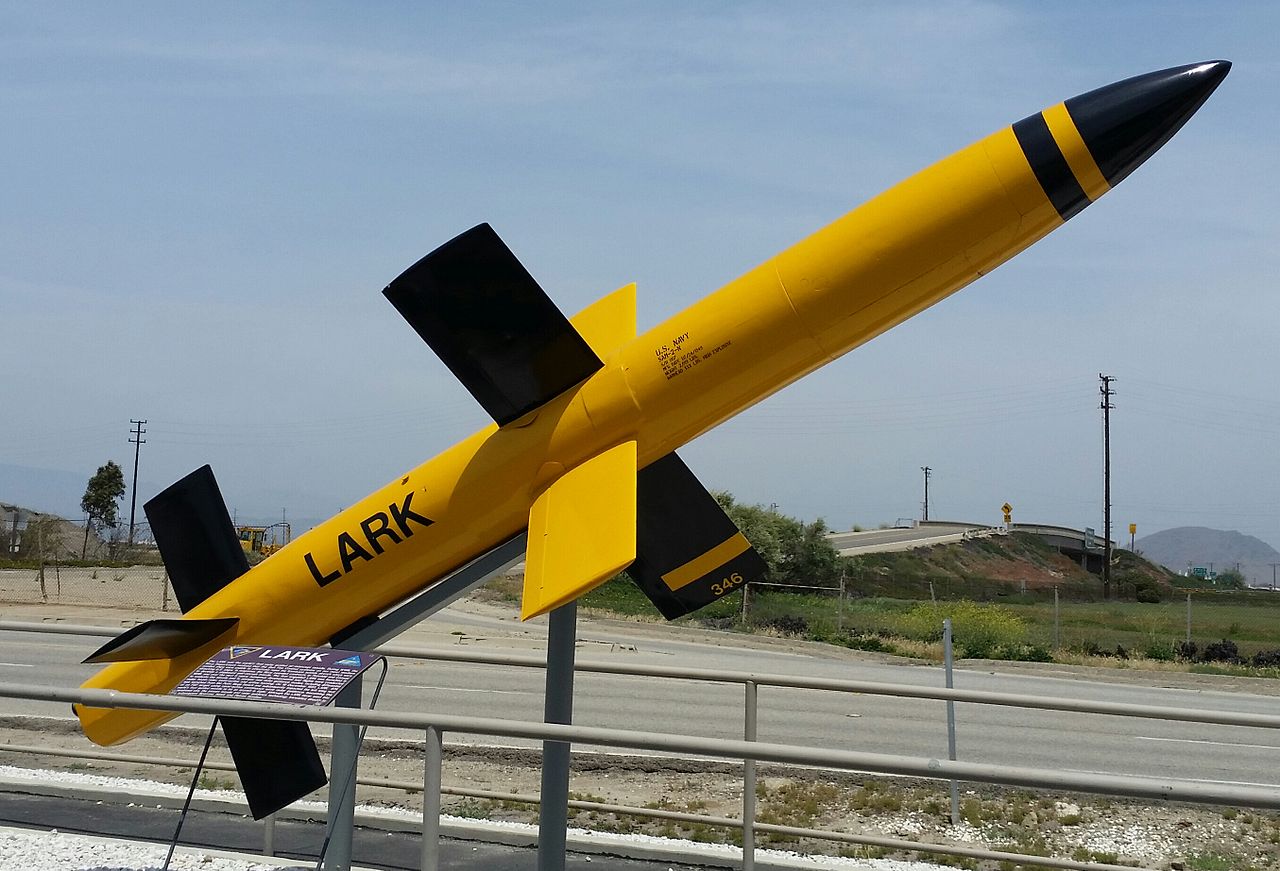
The Lark missile
The obvious answer was a surface-to-air missile, one hopefully capable of shooting down the attacking aircraft before it got within range. Both the Bureau of Aeronautics (responsible for aircraft) and the Bureau of Ordnance (responsible for guns and torpedoes) were interested in the problem, and began separate programs. BuAer managed to get into the air first with Lark, intended as an emergency counter to the kamikazes, but the subsonic missile used liquid propellants, which tended to make naval officers nervous due to the risk of a spill, and ran into formidable guidance problems, which it helped solve before becoming obsolete.
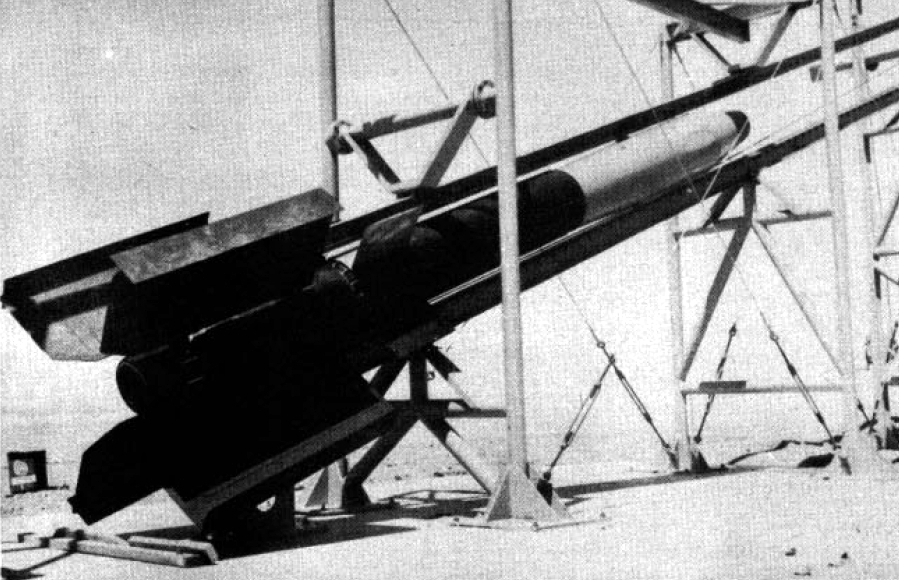
A ramjet prototype during missile development
More successful was BuOrd's program, which was run by the same team that had developed the proximity fuze. It was called Bumblebee, as a reference to the myth that bumblebees shouldn't be able to fly,1 and quickly settled on a ramjet2 missile, the only system that was thought to have sufficient range at supersonic speeds to be able to take out missile-carrying aircraft before they could launch. This faced a number of formidable technical problems. Ramjets were barely more than laboratory curiosities, and also wouldn't produce any thrust while standing still. They would need a boost up to operating speed, requiring a solid rocket booster far larger than any in existence. Guidance was another unknown. Obviously, any form of manual guidance, like the Germans had used in the Wasserfall missile, was out, and the initial plan was to have the missile ride a beam to the target. The problem was that the beam spread out as it traveled, and at ranges over 10 nm, it was large enough that the target might well be outside the radius of the warhead. The alternative was semi-active homing, where the missile would home in on reflections from a ship-mounted illuminator, but this required the missile to be quite close to the target. The solution was to merge the two, using beam-riding to get close to the target, and then semi-active to get the missile within lethal range. Even the basic questions of supersonic aerodynamics were essentially unknown at the time, and would have to be worked out.
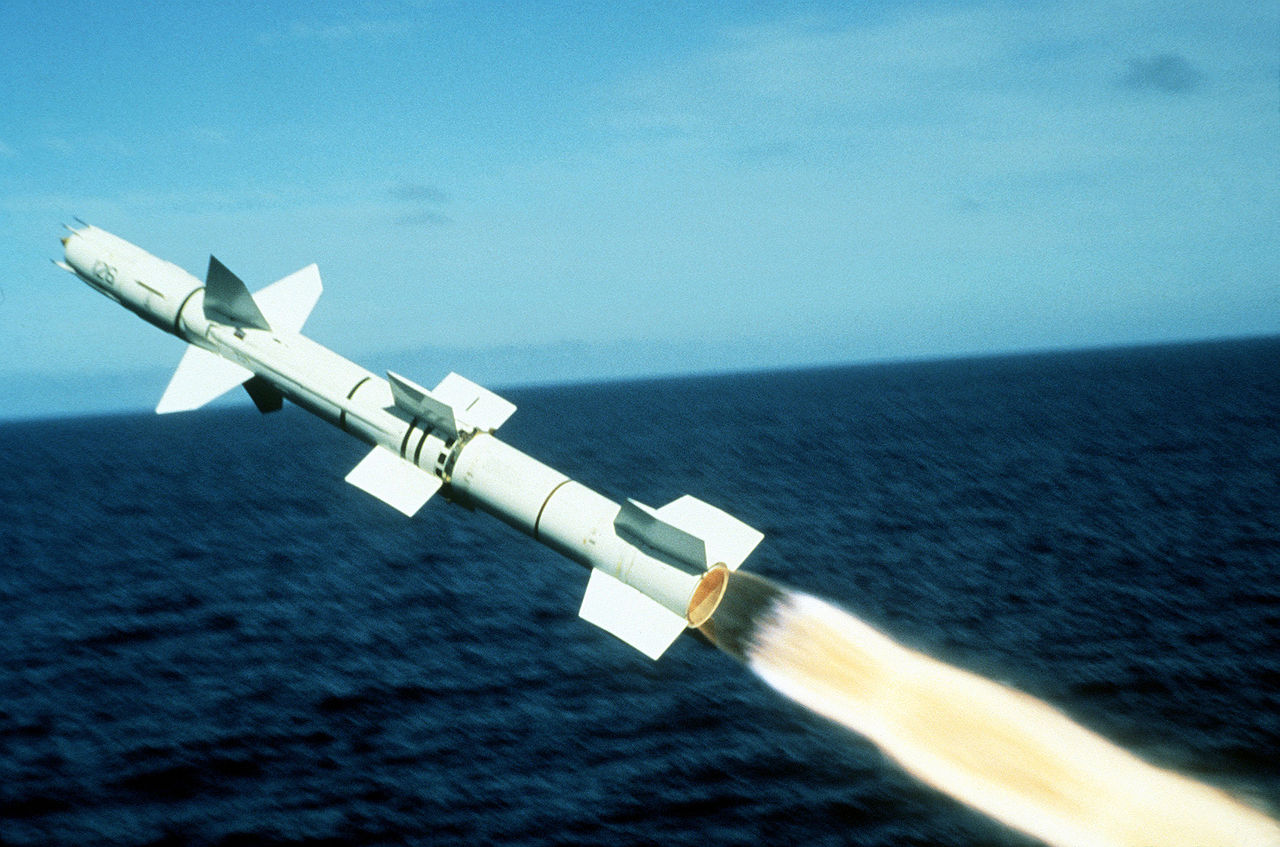
A Talos missile
Development began early in 1945, and proceeded slowly, as ramjet designs that worked perfectly well at small scales failed when enlarged. Two major issues were keeping the flame inside the engine from being blown out, and making sure that all of the fuel burned before it left the missile. While ramjet development was ongoing, a series of rockets were built to test guidance and control technologies. It was soon realized that one of these, known as the Supersonic Test Vehicle, would actually make a pretty decent missile in its own right. It wouldn't have the range of the ramjet missile, which had been dubbed Talos, but it could be operational much sooner. This missile, called Terrier, would have a range of about 10 nm, which meant that beam-riding guidance alone was sufficient. It was still a two-stage weapon, with a separate booster that fell away after launch and a slower-burning sustainer that kept the missile at supersonic speed for the rest of its flight. Despite this, Terrier was small enough to fit on large destroyers, as opposed to the cruisers Talos needed, a factor that would be vital to the longevity of the system.
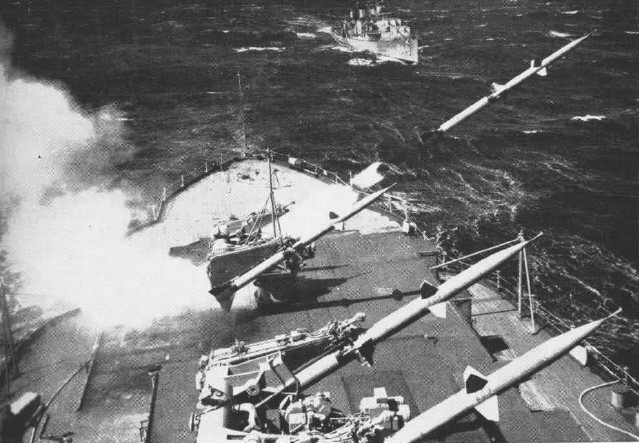
Terrier prototypes aboard Mississippi
The first proper Terrier prototype flew in 1951, followed by the Talos prototype a year later. Terrier was first tested at sea from the former battleship Mississippi in mid-1953, and was installed in rudimentary conversions on the heavy cruisers Boston and Canberra, finally becoming operational in 1956. Talos followed it to sea two years later aboard Galveston, Little Rock and Oklahoma City. Even as both systems were going to sea, improved missiles were being developed that would give greater range and better capability against the faster aircraft that had been developed since they were first designed. The second stage of Terrier in particular was radically redesigned, with the control surfaces moved from the midbody to the tail. Soon after, another upgrade saw Terrier shift from beam-riding to semi-active homing, with improved accuracy, particularly against low-flying targets.3
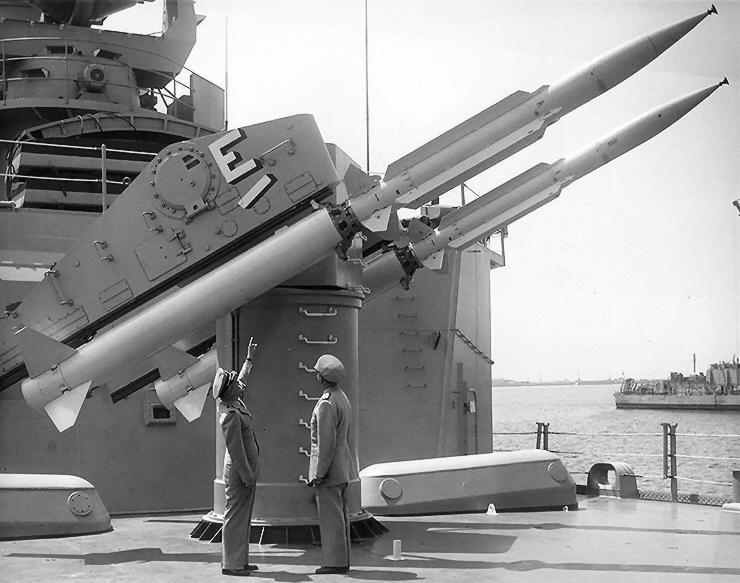
Tail-controlled Terriers on a launcher
It was this version of Terrier that formed the basis for Tartar, the last and smallest member of the 3T family. Tartar was essentially the second stage of Terrier, fitted with a dual-thrust motor which would first boost it to speed and then sustain it during cruise, much as the booster/sustainer pairings of Terrier and Talos did. Besides being able to fit onto properly destroyer-sized ships, Tartar had the advantage of not requiring human intervention when being prepared for launch, allowing it to be fired much faster. It first entered service in 1962 aboard the Charles F Adams class destroyers, and was widely used on both US and foreign destroyers.
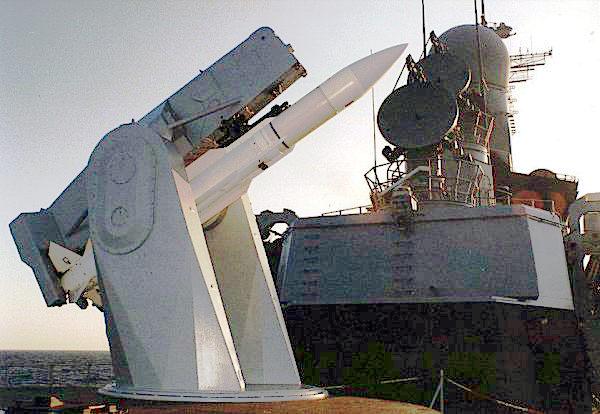
A Tartar missile
All three missile systems suffered from serious reliability problems, particularly in their guidance electronics. A sample of early Tartar ships reported only 30% readiness, a third of the desired figure. In response, Secretary of Defense Robert McNamara cut missile ship construction and the follow-on Typhon program, designed to respond to saturation attacks, in favor of reliability improvements to the 3T system. The "get well" program ultimately saw Tartar and Terrier replaced by the Standard Missile family. This was truly a standard weapon, with the only real difference between the RIM-66 Standard MR (Tartar replacement) and the upper stage of the RIM-67 Standard ER (Terrier replacement) being the motor and power supply. Talos didn't receive the same level of updates, as there was clearly not going to be an ongoing construction program of big missile ships, and RIM-67's range was judged to be adequate.
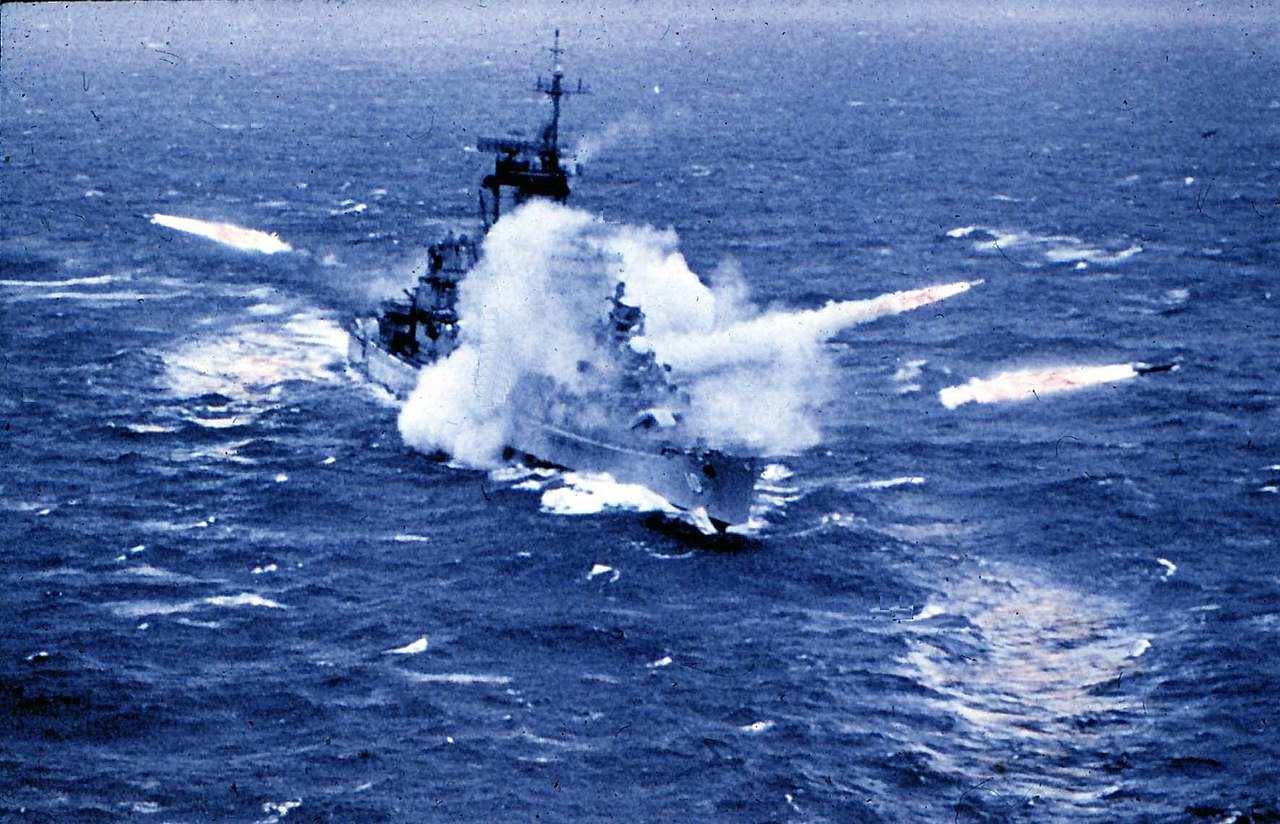
Cruiser Albanay launching Tartar and Talos missiles
While Talos was retired in 1979, the Standard missile, much upgraded, remains in use today. The original fire control system was replaced with Aegis, developed to fill the void left by Typhon's cancellation, which equips almost all US surface warships today. Ultimately, the US Navy's largely evolutionary approach to air defense weapons has worked wonderfully to produce world-class systems at acceptable cost and risk.
1 It is true that if you analyze a bumblebee as if it was an airplane, the math says it won't be able to fly. But a bumblebee is not an airplane, and we do understand how it flies. It's just more complicated than an airplane, thanks to the behavior of air at the scales in question. ⇑
2 A ramjet is related to a normal jet engine, but instead of using a fan to compress the air for burning, it uses the motion of the missile to do so, and works best at high speeds. ⇑
3 The nuclear versions of Terrier and Talos retained beam-riding guidance due to concerns about positive control of nuclear weapons. ⇑

Comments
Regarding the Talos there are this pages on the marvellous OkieBoat website: https://www.okieboat.com/Talos%20history.html
Were earlier unguided anti-air rockets such as the Unrotated Projectile and Werfer-Granate 21 at all effective or were they just a curiosity?
These are very large missiles, what was pushing up the size so much? I can think of a few possible reasons.
@cassander
Given the time-period, I would guess 'desire to use nuclear warheads'.
@Emilio
Yeah, that is an amazing page, and I've made use of it.
@Lambert
Not as far as I know. UP went away pretty quickly.
@cassander
Technological limits of the time. Initially, they were hoping to get Talos to 10 or 20 nm, and by the end of its lifespan, it could go something like 150 nm. Note that they eventually consolidated down to essentially Tartar-only.
Something I've always wondered about: how many US post-war missile devs were called Dr. Merkwürdigliebe before they became citizens?
Did the americans just get inspiration from the German designs, or were they and the men who made them integrated into the development process, like the captured V2s & scientists?
@echo
Less than you might think. AFAIK, very little influence from Germany ended up in the USN's SAM programs, and even most of the ballistic missiles ended up being developed by domestic teams. The reason for the Germans being so prominent is that Von Braun was a genius at PR, and that NASA got them when nobody else wanted them.
@bean
right, but what technical limitations? analog electronics? insufficiently thrusty engines? fuel inefficiency?
Pretty much all of the above. There were at least two points when better motors doubled the range of both Talos and Terrier. Tartar I believe only benefited from the second of these after it entered service.
I presume it's the electronics that were unreliable, rather than the electrons themselves.
I don't know, everything I've heard about electrons is pretty negative.
But if you try to improve reliability by using positively charged leptons you get gamma rays.